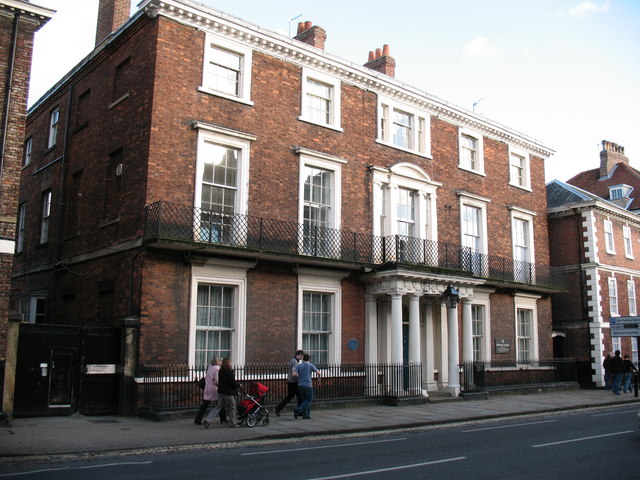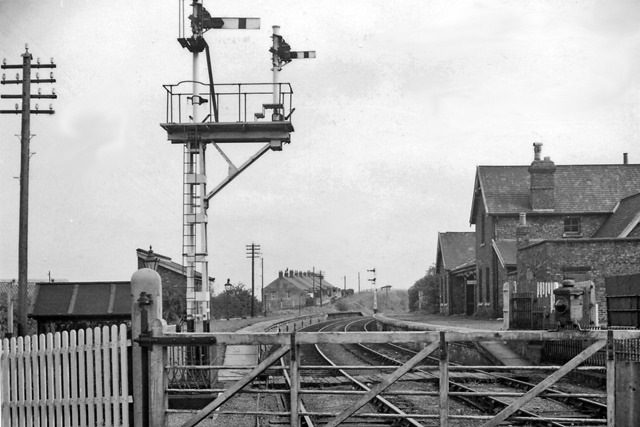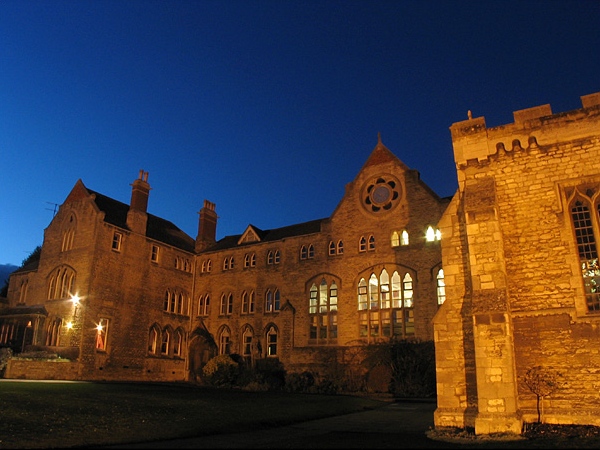|
Cleveland Work Camps
The Cleveland Work Camps in England were known locally as "Heartbreak Hill". They were a series of short events, staged in the East Cleveland ironstone mining villages of Boosbeck and Margrove Park, which ran from 1932 to 1938 with the aim of helping to alleviate the poverty which these mining communities experienced as a result of pit closures during the Great Depression. Notable figures involved with establishing the scheme were the aristocratic landowner Major James Pennyman and his wife Ruth Pennyman, an idealistic young Cambridge University graduate called Rolf Gardiner, Manchester Guardian Journalist David Ayerst and local trade unions. The scheme was ostensibly created to enable the miners, with the help of student volunteers, to cultivate rough moorland with the aim of growing crops and keeping livestock. In addition to these practicalities, music and entertainment events were also staged with the aim of helping the student volunteers integrate with the miners. At the fi ... [...More Info...] [...Related Items...] OR: [Wikipedia] [Google] [Baidu] |
Redcar And Cleveland
Redcar and Cleveland is a borough with unitary authority status in North Yorkshire, England. Its main settlements are Redcar, South Bank, Eston, Brotton, Guisborough, the Greater Eston part of Middlesbrough, Loftus, Saltburn and Skelton. The borough had a resident population of 135,200 in 2011. It is a part of the Tees Valley mayoralty: the current mayor is Ben Houchen. The borough is represented in Parliament by Jacob Young ( Conservative Party) for the Redcar constituency, and by Simon Clarke ( Conservative Party) for the Middlesbrough South and East Cleveland constituency. History The district was created in 1974 as the borough of Langbaurgh, one of four districts of the new non-metropolitan county of Cleveland. It was formed from the Coatham, Kirkleatham, Ormesby, Redcar and South Bank wards of the County Borough of Teesside, along with Guisborough, Loftus, Saltburn and Marske-by-the-Sea, Eston Grange and Skelton and Brotton urban districts, from the North ... [...More Info...] [...Related Items...] OR: [Wikipedia] [Google] [Baidu] |
Francesca Allinson
Francesca Allinson (born Enid Ellen Pulvermacher Allinson; 20 August 1902 – 7 April 1945) was an English writer, musician and puppeteer. She was the youngest child of the pioneering physician and wholemeal bread entrepreneur Dr Thomas Allinson, and sister of the artist Adrian Allinson. Biography Allinson wrote the semi-autobiographical book ''A Childhood'' which was published by Hogarth Press in 1937. She was a musician, a puppeteer, a conductor with the London Labour Choral Union, and wrote extensively on the origins of English folk song, clashing with the composer Ralph Vaughan Williams on the subject. She published editions of Henry Purcell and Orlando Gibbons and her unpublished manuscript on the Irish origins of English folksong is held at the Vaughan Williams Memorial Library. Allinson was a pacifist and established a community farm in East Grinstead, Surrey, where conscientious objectors worked during World War II. Her circle of friends and collaborators incl ... [...More Info...] [...Related Items...] OR: [Wikipedia] [Google] [Baidu] |
Great Depression In The United Kingdom
The Great Depression in the United Kingdom also known as the Great Slump, was a period of national economic downturn in the 1930s, which had its origins in the global Great Depression. It was Britain's largest and most profound economic depression of the 20th century. The Great Depression originated in the United States in late 1929 and quickly spread to the world. Britain did not experience the boom that had characterized the U.S., Germany, Canada and Australia in the 1920s, so its effect appeared less severe.H. W. Richardson, "The Economic Significance of the Depression in Britain," ''Journal of Contemporary History'' (1970) 4#4 pp. 3–1in JSTOR/ref> Britain's world trade fell by half (1929–33), the output of heavy industry fell by a third, employment profits plunged in nearly all sectors. At the depth in summer 1932, registered unemployed numbered 3.5 million, and many more had only part-time employment. However at the same time, it is important to consider that from 1 ... [...More Info...] [...Related Items...] OR: [Wikipedia] [Google] [Baidu] |
Bootham School
Bootham School is an independent Quaker boarding school, on Bootham in the city of York in England. It accepts boys and girls ages 3–19, and had an enrolment of 605 pupils in 2016. It is one of seven Quaker schools in England. The school was founded by the Religious Society of Friends (Quakers) and opened on 6 January 1823 in Lawrence Street, York. Its first headmaster was William Simpson (1823–1828). He was followed by John Ford (1828-c.1865). The school is now on Bootham, near York Minster, in a building originally built in 1804 for Sir Richard Vanden Bempde Johnstone. The school's motto ''Membra Sumus Corporis Magni'' means "We are members of a greater body", quoting Seneca the Younger (Epistle 95, 52). Academics Bootham was ranked at 43rd in the 2011 Independent Schools A-Levels League Tables. Notable alumni Notable former pupils include the 19th-century parliamentary leader John Bright, the mathematician Lewis Fry Richardson ("father of fractals"), the ... [...More Info...] [...Related Items...] OR: [Wikipedia] [Google] [Baidu] |
Bauhaus
The Staatliches Bauhaus (), commonly known as the Bauhaus (), was a German art school operational from 1919 to 1933 that combined crafts and the fine arts.Oxford Dictionary of Art and Artists (Oxford: Oxford University Press, 4th edn., 2009), , pp. 64–66 The school became famous for its approach to design, which attempted to unify individual artistic vision with the principles of mass production and emphasis on function. The Bauhaus was founded by architect Walter Gropius in Weimar. It was grounded in the idea of creating a Gesamtkunstwerk ("comprehensive artwork") in which all the arts would eventually be brought together. The Bauhaus style later became one of the most influential currents in modern design, modernist architecture, and architectural education. The Bauhaus movement had a profound influence upon subsequent developments in art, architecture, graphic design, interior design, industrial design, and typography. Staff at the Bauhaus included prominent ar ... [...More Info...] [...Related Items...] OR: [Wikipedia] [Google] [Baidu] |
Frida Knight
Frida Knight (1910–1996) was an English communist activist and author. Life Born Frideswide Frances Emma Stewart, and known as Frida, she was the daughter of Hugh Fraser Stewart (1863–1948) and his wife Jessie Graham Crum; her sister Caitin (Katherine) married George Derwent Thomson, and her brother Ludovic married Alice Mary Naish. She left school at 14 with a heart condition, and spent time in Italy. A student of music and drama, Stewart went with one of her sisters to Germany in 1928, studying the violin, and then went to the Royal College of Music. She spent time at the Manchester University Settlement and Hull University College. In 1935 she visited the Soviet Union on a British Drama League trip. Stewart then joined the Left Book Club and Communist Party of Great Britain, and formed local Spanish Aid committees on the outbreak of the Spanish Civil War. She drove an ambulance to Spain on behalf of the National Joint Committee for Spanish Relief. In 1937 she was at a ho ... [...More Info...] [...Related Items...] OR: [Wikipedia] [Google] [Baidu] |
Robin Hood (Tippett Opera)
''Robin Hood'' is a ballad opera by Michael Tippett based on the legend of Robin Hood. Composed in 1934, the score remains unpublished. However, Tippett later used an expanded version of the overture as the finale to his 1948 ''Suite in D major (For the Birthday of Prince Charles)''. Background During the Great Depression of the 1930s, Tippett was hired to organize the musical life at the Cleveland Work Camps for unemployed miners in North Yorkshire. As part of his work there, he revised and abridged John Gay's '' The Beggar's Opera'' for performances in the church hall next to the Miners' Institute in Boosbeck. Encouraged by its success, he composed a ballad opera of his own, ''Robin Hood'', with a subtext that reflected the difficulties faced by the unemployed miners. At this time in his life Tippett was involved with radical left-wing politics and the libretto reflected these socialist views. Performers in the opera included friends of the composer such as Wilfred Franks ... [...More Info...] [...Related Items...] OR: [Wikipedia] [Google] [Baidu] |
Wilfred Franks
Wilfred Florestan Franks (1908–2003) was a British artist, designer, sculptor, dancer and actor. He married Daphne Rudd in 1951 Biography Franks trained at the Staatliche Bauhochschule (de) in Weimar, Germany from 1929 to 1930. He also attended classes at the Bauhaus art school in Dessau, although he was not officially enrolled at the school. On his return to England Franks worked with a mining community in the Village of Boosbeck in the northeast of England, teaching a group of unemployed miners how to design and make furniture. It was through his involvement with Boosbeck that Franks got to know the composer Michael Tippett. Franks and Michael Tippett were involved in an intense love affair during the 1930s, and Tippett dedicated his String Quartet No.1 to Franks. Tippett remarked: "Meeting with Wilf was the deepest, most shattering experience of falling in love: and I am quite certain that it was a major factor underlying the discovery of my own individual musical ‘vo ... [...More Info...] [...Related Items...] OR: [Wikipedia] [Google] [Baidu] |
The Beggar's Opera
''The Beggar's Opera'' is a ballad opera in three acts written in 1728 by John Gay with music arranged by Johann Christoph Pepusch. It is one of the watershed plays in Augustan drama and is the only example of the once thriving genre of satirical ballad opera to remain popular today. Ballad operas were satiric musical plays that used some of the conventions of opera, but without recitative. The lyrics of the airs in the piece are set to popular broadsheet ballads, opera arias, church hymns and folk tunes of the time. ''The Beggar's Opera'' premiered at the Lincoln's Inn Fields Theatre on 29 January 1728 and ran for 62 consecutive performances, the second-longest run in theatre history up to that time (after 146 performances of Robert Cambert's '' Pomone'' in Paris in 1671). The work became Gay's greatest success and has been played ever since; it has been called "the most popular play of the eighteenth century". In 1920, ''The Beggar's Opera'' began a revival run of 1,4 ... [...More Info...] [...Related Items...] OR: [Wikipedia] [Google] [Baidu] |
Boosbeck
Boosbeck is a village in the borough of Redcar and Cleveland and the ceremonial county of North Yorkshire North Yorkshire is the largest ceremonial county (lieutenancy area) in England, covering an area of . Around 40% of the county is covered by national parks, including most of the Yorkshire Dales and the North York Moors. It is one of four cou ..., England. The name is Viking in origin and means "the stream near a cow shed". Between 1878 and 1960, the village had a station on the North Eastern Railway line between and . References External links Villages in North Yorkshire Places in the Tees Valley Redcar and Cleveland {{Redcar-geo-stub ... [...More Info...] [...Related Items...] OR: [Wikipedia] [Google] [Baidu] |
Michael Tippett
Sir Michael Kemp Tippett (2 January 1905 – 8 January 1998) was an English composer who rose to prominence during and immediately after the Second World War. In his lifetime he was sometimes ranked with his contemporary Benjamin Britten as one of the leading British composers of the 20th century. Among his best-known works are the oratorio '' A Child of Our Time'', the orchestral '' Fantasia Concertante on a Theme of Corelli'', and the opera '' The Midsummer Marriage''. Tippett's talent developed slowly. He withdrew or destroyed his earliest compositions, and was 30 before any of his works were published. Until the mid-to-late 1950s his music was broadly lyrical in character, before changing to a more astringent and experimental style. New influences, including those of jazz and blues after his first visit to America in 1965, became increasingly evident in his compositions. While Tippett's stature with the public continued to grow, not all critics approved of these chan ... [...More Info...] [...Related Items...] OR: [Wikipedia] [Google] [Baidu] |






